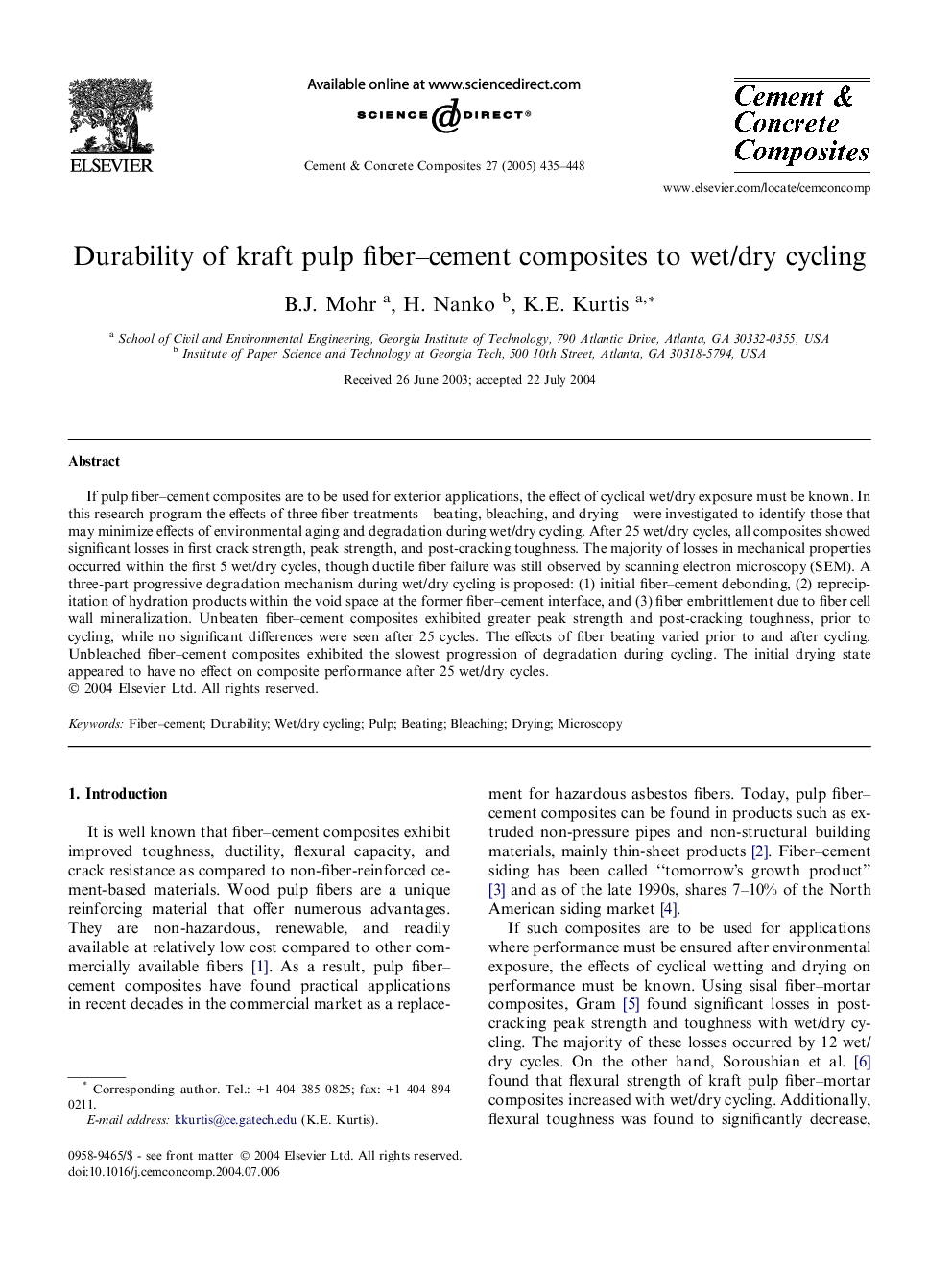| Article ID | Journal | Published Year | Pages | File Type |
|---|---|---|---|---|
| 10621937 | Cement and Concrete Composites | 2005 | 14 Pages |
Abstract
If pulp fiber-cement composites are to be used for exterior applications, the effect of cyclical wet/dry exposure must be known. In this research program the effects of three fiber treatments-beating, bleaching, and drying-were investigated to identify those that may minimize effects of environmental aging and degradation during wet/dry cycling. After 25 wet/dry cycles, all composites showed significant losses in first crack strength, peak strength, and post-cracking toughness. The majority of losses in mechanical properties occurred within the first 5 wet/dry cycles, though ductile fiber failure was still observed by scanning electron microscopy (SEM). A three-part progressive degradation mechanism during wet/dry cycling is proposed: (1) initial fiber-cement debonding, (2) reprecipitation of hydration products within the void space at the former fiber-cement interface, and (3) fiber embrittlement due to fiber cell wall mineralization. Unbeaten fiber-cement composites exhibited greater peak strength and post-cracking toughness, prior to cycling, while no significant differences were seen after 25 cycles. The effects of fiber beating varied prior to and after cycling. Unbleached fiber-cement composites exhibited the slowest progression of degradation during cycling. The initial drying state appeared to have no effect on composite performance after 25 wet/dry cycles.
Related Topics
Physical Sciences and Engineering
Engineering
Industrial and Manufacturing Engineering
Authors
B.J. Mohr, H. Nanko, K.E. Kurtis,
